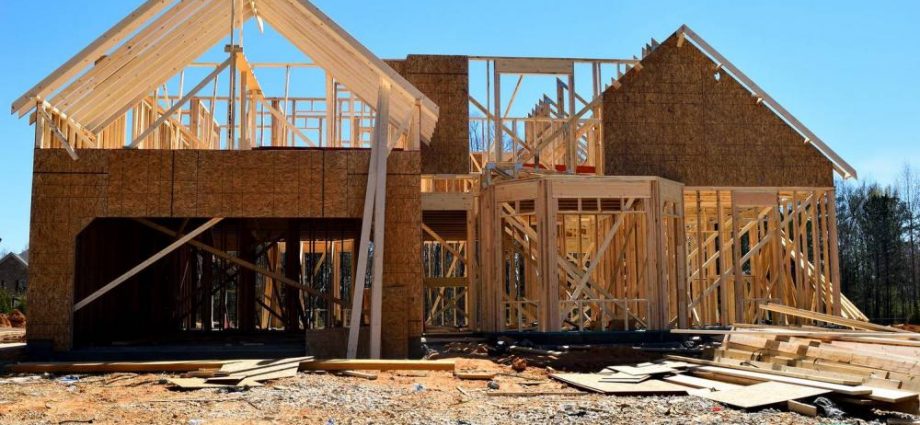Roof trusses offer a more modern and optimized method of support. These trusses are created even before arriving at the construction site. Together, the trusses form a wooden structure that supports the roof while connecting the walls of the house. The most noticeable difference between roof trusses and rafters is that the former are not built only from wide dimensional boards. Although less material is used, wood (or steel) is more durable. Rafters can be hidden or exposed as an architectural element. On the other hand, trusses are less likely to be installed as aesthetic features in the home. The price of roof trusses and lattice trusses differs from the price of rafters.
Visible differences
As we have already mentioned, the trusses are manufactured before arriving at the construction site, while the rafters are assembled on site. This is a huge difference that has led many contractors and homeowners to choose trusses. Since the trusses are manufactured in a factory that maintains a controlled environment, they are double checked and guaranteed to be of high quality. The automated production process ensures that the trusses are produced in a short time, which is excellent for construction efficiency. Each truss is made specifically for the needs of a given project. Whether you are building cathedral ceilings or cross trusses, trusses can be made exactly to your requirements. There are no miscalculations, poor last-minute measurements or design errors. Rafters, on the other hand, they are not that quick (or easy) to create. Each element is assembled in place, one by one. They may seem cheaper, but the lengthy manufacturing process can result in a high bill. In addition, it is difficult to ensure quality – external factors such as weather can cause problems. Lattice trusses do not have to deal with such problems. However, wooden trusses may be more susceptible to moisture.
- https://www.sitart.com.pl/ogrzej-dom-pompa-ciepla/
- https://www.mtc.org.pl/oc-dla-firmy/
- https://www.joga.waw.pl/jak-dziala-czujka-mikrofalowa/
Disturbing signals
There are several reasons why a roof can sag, but all of them indicate the need for replacement. Sagging can be a sign that materials are failing. Roofs often sag when they hold too much snow or ice. Problems can occur when original roofing materials have been installed incorrectly. Water that collects in the attic or seeps from the ceiling is usually a sign of roof problems. While a small leak may seem like a minor matter, it can hide problems that cause health problems and damage to structural materials. Water damage experts are warning that water leaking from a roof can short out wires and threaten the structural integrity of a home. It can also cause the growth of toxic mold, which leads to respiratory problems. Over time, the granules on the shingles may start to fall off and form dark spots on the roofs. This is a signal that the shingles have aged and need to be replaced. Mosses and algae growing on roofs also cause dark spots that may indicate the presence of moisture. During installation, roofing contractors install flashing around chimneys, vents, and skylights to seal roof seams and prevent water from leaking through them. Over time, the flashing can develop gaps or cracks that cause leaks. This problem is common with older roofs and can mean that the materials are nearing the end of their useful life. The average asphalt shingle roof lasts 20 to 25 years. The roof of a house that is 20 years old or older is likely to have problems and should be replaced, before it causes costly damage. Older roofs can also cost homeowners money when they file insurance claims for roof damage.Wooden roof trusses should be subject to regular maintenance.
Reinforcement needed
Parapet trusses may need to be reinforced after many years of wear or damage from rotting and other factors. Parapet trusses can also be weakened by heavy snow on top of them. This is especially the case if the roof is not sloped enough. Fortunately, there are several fairly uncomplicated ways to strengthen attic trusses using reliable methods that are often used in construction. Examine the attic trusses and determine which ones need repair or reinforcement. Measure the length and width of the truss. Trusses tend to be standard sizes, but this is not always the case, especially in older buildings. Mark the dimensions on the plywood sheet. There should be two marks on one end of the plywood sheet which should indicate the width of the truss, you measured. Mark the other side of the truss length accordingly. Be sure to cut the length of the wood along the grain line of the plywood. Attach the plywood brackets to the sides of the attic trusses. Make sure the plywood strips are properly aligned with any cracks in the truss. In case of severe damage or as a result of long-term wear, the roof trusses must be replaced. They are usually replaced every 10 years.








